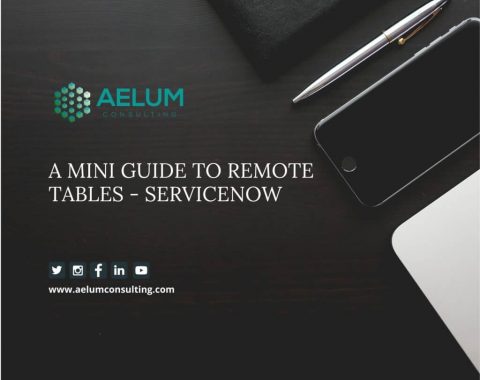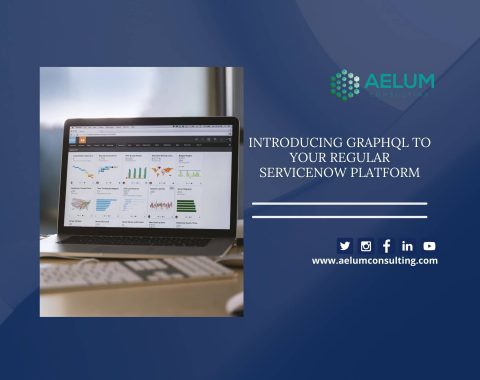Identify and resolve complicated issues from the root with ServiceNow problem management.

PROBLEM MANAGEMENT
Problem management is the process of identifying, resolving, and preventing issues that negatively impact the quality of services provided to customers. This process involves identifying the root cause of incidents and preventing a recurrence through continuous improvement and proactive risk management. It aims to minimize the impact of incidents on customers and ensure that services are restored to normal as quickly as possible.
Features of ServiceNow Problem Management
Problem Identification
Enables organizations to identify and prioritize problems through various channels, including incident management, self-service, & event management. It helps firms to focus on critical problems and address them promptly.
Root Cause Analysis
Provides tools for conducting RCA to identify the underlying causes of problems. It helps prevent future incidents and disruptions rather than just treating the symptoms, ultimately leading to a more permanent solution.
Collaboration
Provides a collaborative environment for teams to work together & resolve problems. It includes features like chat, collaboration boards, and notifications to keep everyone informed about the status of the problem.
Knowledge Management
Integrates with Knowledge Management to provide access to relevant knowledge articles, best practices, and solutions. It helps to speed up the resolution process and reduce the time to resolve problems.
Automation
Provides automation capabilities that help to reduce the manual effort required for problem resolution. It includes automated workflows, notifications, and escalations to ensure that problems are resolved in a timely manner.
Reporting and Analytics
Provide real-time reporting and analytics capabilities that help organizations track the progress of problem resolution, measure the effectiveness of the process, and identify areas for improvement.
Problem Management Process Flow
Problem identification
Problem logging and classification
Problem investigation and diagnosis:
Problem resolution
Problem closure
Problem review
Problem prevention
Benefits of Problem Management
Improved service quality
By identifying and resolving issues that cause incidents, problem management helps improve the quality of service provided to the customer.
Increased efficiency
By addressing the root causes of incidents, problem management helps reduce incidents’ frequency and minimize downtime, increasing efficiency and productivity.
Improved customer satisfaction
Effective problem management helps to restore services to normal as quickly as possible, reducing the impact of incidents on customers and improving customer satisfaction.
Increased reliability
By preventing the recurrence of incidents through continuous improvement and proactive risk management, problem management helps increase service reliability.
A better understanding of systems and processes
Through the process of identifying the root cause of incidents, problem management provides valuable insights into systems and processes. You can use this information to improve overall service delivery.
Cost savings
By reducing the frequency of incidents and minimizing downtime, problem management can help to reduce the costs associated with incident resolution and service restoration.
Problem Management Roles and Responsibilities
Problem Manager
Responsible for overseeing the overall problem management process and resolving incidents promptly and effectively.
Problem Investigator
Responsible for collecting information about incidents, identifying the root cause, and determining the most appropriate resolution.
Problem Solver
Responsible for implementing the resolution and solving the incidents promptly and effectively.
Problem Owner
Responsible for implementing the resolution and closing the incident promptly and effectively
Change Manager
Responsible for ensuring that changes related to problem resolution are adequately planned, implemented, and monitored.
Incident Manager
Responsible for handling incidents promptly and effectively. Also, ensure they are escalated to problem management when appropriate.
Problem Management Tips and Best Practices!
Define clear goals and objectives
Ensure that the problem management process is aligned with the goals and objectives of the organization. Also, the problem management team clearly understands its role and responsibilities.
Implement a centralized problem management system
Use a centralized problem management system to track and manage incidents. Also, ensure that all relevant information is captured and stored consistently.
Foster collaboration
Encourage collaboration between different IT services management teams, such as incident management, change management, and service management, to ensure that incidents are resolved timely & effectively.
Prioritize problem resolution
Ensure that incidents are prioritized based on their impact and urgency and that the most critical incidents are resolved first. It makes the complete problem solving process flawless.
Continuously monitor and evaluate the process
Regularly review the problem management process and make changes as necessary to improve its effectiveness.
Encourage continuous improvement
Encourage continuous improvement by regularly evaluating the effectiveness of the problem-resolution process and identifying opportunities for improvement.
Provide training and support
Ensure the problem management team has the necessary training and support to perform their role effectively. It can make your organization workflow smooth.
Accurate documentation
Maintain accurate & up-to-date documentation of incidents, their resolution, and the outcomes to ensure that the problem management process is transparent and that lessons learned are captured and shared.
Problem Management with ServiceNow


How Can Aelum Consulting Help with ServiceNow Problem Management?
Aelum Consulting is a ServiceNow partner with expertise in IT Service Management, including problem management. Here are some ways our experts can help with ServiceNow problem management:
Consulting
Our professionals can help organizations identify and define their problem management process and ensure it aligns with ITIL’s best practices. They can guide the configuration and setup of ServiceNow’s problem management module and help integrate other modules and tools.
Implementation
We can help organizations implement the problem management module in ServiceNow. It includes the customization and configuration of the module to fit the organization’s specific needs.
Integration
Our experts can help organizations integrate ServiceNow’s problem management module with other systems and tools, such as monitoring and alerting tools, to help automate the problem identification and resolution process.
Training
We can provide training for IT staff and end-users on how to use the problem management module in ServiceNow, including best practices for problem identification, classification, and resolution.
Support
Our experts can provide ongoing support for ServiceNow problem management, including maintenance and upgrades and troubleshooting any issues that may arise.
Problem Management Terms to Know
Incident
An unplanned interruption or reduction in the quality of an IT service.
Problem
The underlying cause of one or more incidents.
Root cause analysis
A process of identifying the underlying cause of a problem.
Permanent resolution
Solution addressing the root cause of a problem & prevents incidents from recurring.
Known error
A recognized problem with an identified workaround or permanent resolution.
Known error database (KEDB)
Created by problem management and applied to manage known errors.
Workaround
Temporary solution to restore normal operation while developing a permanent one.
Problem management report
A report that supplies problem information to other service management processes.
Problem record
A document that describes a problem and its status in various stages.
Problem review
Periodic review of problems to assess effectiveness & identify areas for improvement.
Problem categorization
Process of classifying problems based on impact & urgency to prioritize activities.
Problem prioritization
Process of determining the priority of problems based on their impact and urgency.
Problem escalation
Process of raising the priority of a problem when it is not being resolved promptly.
Problem trend analysis
Problem data analysis process to identify trends, patterns, & areas for improvement.
Frequently Asked Questions
| Problem Management | Incident Management |
| Focuses on the long-term resolution of issues | Focuses on the immediate resolution of incidents |
| Addresses the root cause of problems | Addresses the symptoms of incidents |
| Aims to prevent future occurrences | Aims to restore normal operations |
| Focuses on proactive resolution | Focuses on the reactive resolution |
| Involves a systematic approach | Involves a reactive approach |
| Typically involves multiple departments | Typically involves a specific department |
| Problem Management | Change Management |
| Focuses on solving issues | Focuses on introducing changes |
| Addresses the root cause of problems | Addresses the impact of changes |
| Reactive approach | Proactive approach |
| Focuses on individual issues | Focuses on larger changes |
| Aims to restore normal operations | Aims to improve operations |
| Typically solves problems one at a time | Typically involves multiple changes |
| Problem Management | Knowledge Management |
| Focuses on resolving issues | Focuses on creating, sharing, and using knowledge |
| Addresses the root cause of problems | Addresses the need for information and knowledge |
| Aims to prevent future occurrences | Aims to improve efficiency and effectiveness |
| Focuses on solving specific problems | Focuses on creating a culture of knowledge sharing |
| Involves a systematic approach | Involves a collaborative approach |
| Typically involves multiple departments | Typically involves a combination of departments |
| Problem Management | Service Request Management |
| Focuses on resolving issues | Focuses on fulfilling requests |
| Addresses the root cause of problems | Addresses specific requests |
| Aims to prevent future occurrences | Aims to meet customer needs |
| Focuses on solving specific problems | Focuses on fulfilling specific requests |
| Involves a systematic approach | Involves a customer-focused approach |
| Typically involves multiple departments | Typically involves a specific department |
| Problem Management | Risk Management |
| Focuses on resolving issues | Focuses on identifying, assessing, and mitigating risks |
| Addresses the root cause of problems | Addresses potential threats to an organization |
| Aims to prevent future occurrences | Aims to minimize the impact of risks |
| Focuses on solving specific problems | Focuses on managing risks across the organization |
| Involves a systematic approach | Involves a proactive approach |
| Typically involves multiple departments | Typically involves multiple departments |
Our Clients

























































